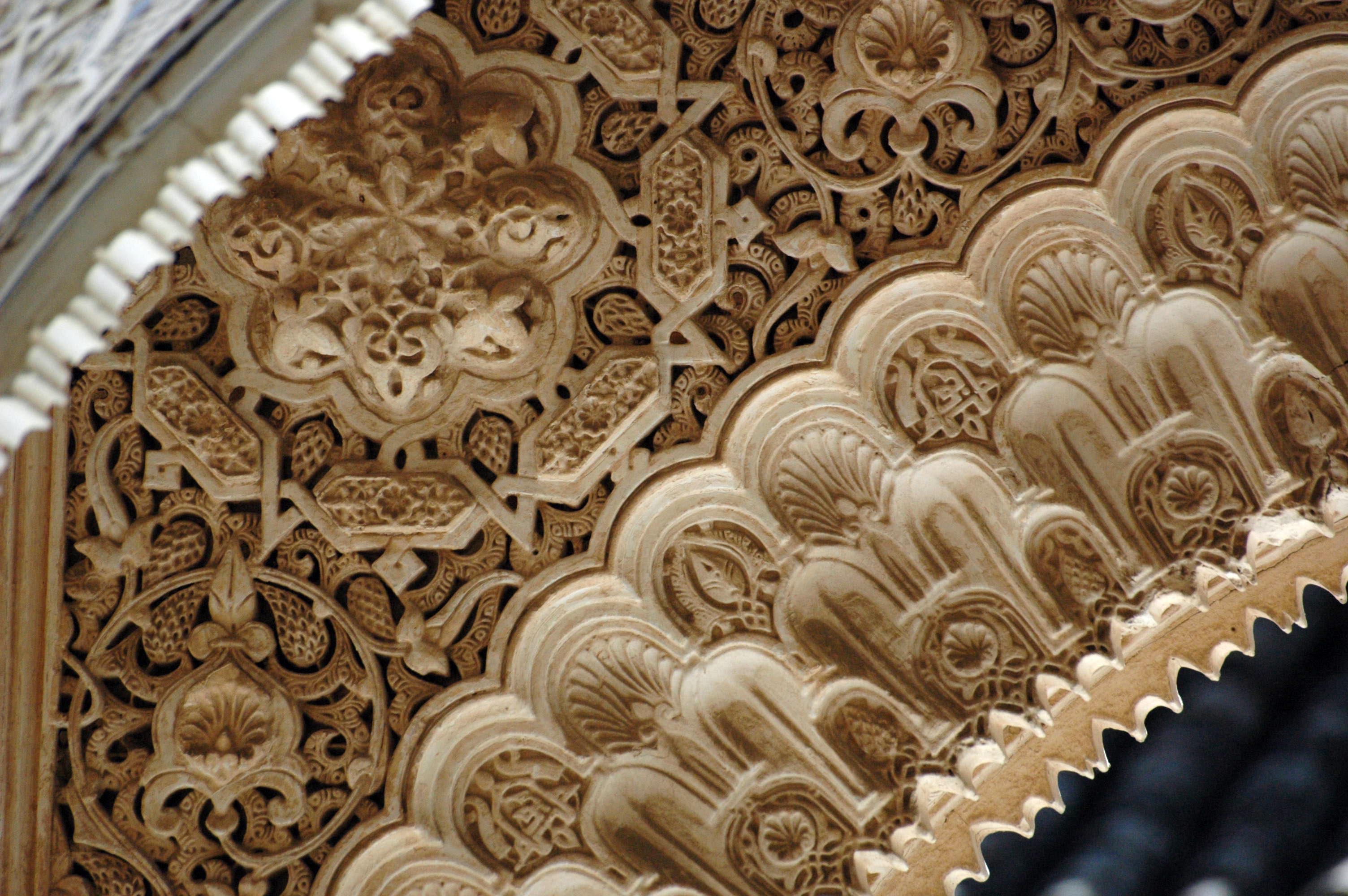
Islamic art
Islamic art is a part of Islamic culture and encompasses the visual arts produced since the 7th century CE by people who lived within territories inhabited or ruled by Muslim populations.[1] Referring to characteristic traditions across a wide range of lands, periods, and genres, Islamic art is a concept used first by Western art historians in the late 19th century.[2] Public Islamic art is traditionally non-representational, except for the widespread use of plant forms, usually in varieties of the spiralling arabesque. These are often combined with Islamic calligraphy, geometric patterns in styles that are typically found in a wide variety of media, from small objects in ceramic or metalwork to large decorative schemes in tiling on the outside and inside of large buildings, including mosques. Other forms of Islamic art include Islamic miniature painting, artefacts like Islamic glass or pottery, and textile arts, such as carpets and embroidery.
This article is about the visual arts in art history. For the architecture associated with Muslims, see Islamic architecture. For other uses, see Islamic culture.
The early developments of Islamic art were influenced by Roman art, Early Christian art (particularly Byzantine art), and Sassanian art, with later influences from Central Asian nomadic traditions. Chinese art had a significant influence on Islamic painting, pottery, and textiles.[3] From its beginnings, Islamic art has been based on the written version of the Quran and other seminal religious works, which is reflected by the important role of calligraphy, representing the word as the medium of divine revelation.[4][5]
Religious Islamic art has been typically characterized by the absence of figures and extensive use of calligraphic, geometric and abstract floral patterns. Nevertheless, representations of human and animal forms historically flourished in nearly all Islamic cultures, although, partly because of opposing religious sentiments, living beings in paintings were often stylized, giving rise to a variety of decorative figural designs.[6]
Both religious and secular art objects often exhibit the same references, styles and forms. These include calligraphy, architecture, textiles and furnishings, such as carpets and woodwork. Secular arts and crafts include the production of textiles, such as clothing, carpets or tents, as well as household objects, made from metal, wood or other materials. Further, figurative miniature paintings have a rich tradition, especially in Persian, Mughal and Ottoman painting. These pictures were often meant to illustrate well-known historical or poetic stories.[7] Some interpretations of Islam, however, include a ban of depiction of animate beings, also known as aniconism. Islamic aniconism stems in part from the prohibition of idolatry and in part from the belief that creation of living forms is God's prerogative.[8][6]
Terminology[edit]
Although the concept of "Islamic art" has been put into question by some modern art historians as a construct of Western cultural views,[9][10][11] the similarities between art produced at widely different times and places in the Muslim world, especially in the Islamic Golden Age, have been sufficient to keep the term in wide use as a useful classification since the late 19th century. Scholars such as Jacelyn K. Kerner have drawn attention to its wide-ranging scope referring to more than 40 nations and to the growing public interest both in Western as well as, more recently, in Muslim societies.[12] Further, the List of Islamic museums bears witness to this art historical term having found wide acceptance.
The Encyclopædia Britannica defines "Islamic arts" as including visual arts, literature, performing arts and music that "virtually defies any comprehensive definition". In a strict sense, the term might only refer to artistic manifestations that are closely related to religious practice. Most often, however, it is meant to include "all of the arts produced by Muslim peoples, whether connected with their religion or not."[4]
Books and journals
![]() Media related to Islamic art at Wikimedia Commons
Media related to Islamic art at Wikimedia Commons